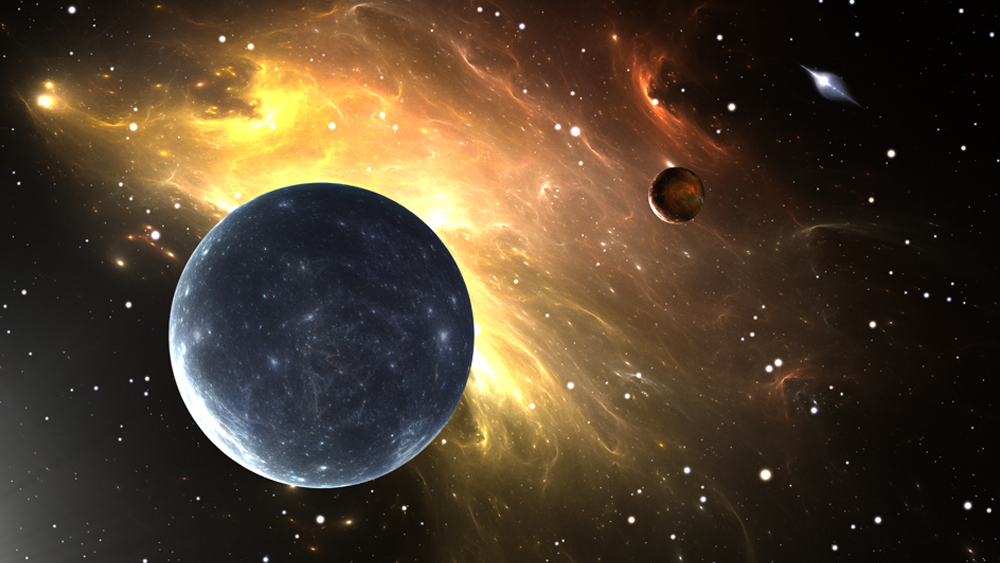There was celebration, albeit briefly, for the discovery of potential life on a planet called K2-18b, which is 124 lightyears away from Earth.
The James Webb Space Telescope (JWST) picked up light from a small red sun as it passed through the atmosphere of this planet. BBC reported an analysis of the findings at Cambridge University’s Institute of Astronomy.
The Cambridge group has found that the atmosphere seems to contain the chemical signature of at least one of two molecules that are associated with life: dimethyl sulphide (DMS) and dimethyl disulphide (DMDS). On Earth, these gases are produced by marine phytoplankton and bacteria.1
In light of this, scientists hoped this planet would harbor life. The lead researcher at Cambridge, Dr. Nikku Madhusudhan, said, “This is a revolutionary moment....It’s the first time humanity has seen potential biosignatures on a habitable planet.”2
British astrophysicist Prof. Chris Lintott said he had “great admiration” for the Cambridge team, but he was evaluating the research carefully: “I think we’ve got to be very careful about claiming that this is ‘a moment’ on the search to life. We’ve [had] such moments before.”1
Astrophysicist Ethan Siegel was blunt, titling his article, “The Evidence for Biosignatures on K2-18b Is Flimsy at Best.” He wrote, “A Cambridge-based team claims to find molecules on an exoplanet that are only produced by life on Earth. Don’t fall for the unfounded hype.”3
The BBC reported that Prof. Catherine Heymans of Edinburgh University (who was not part of the research team) said, “Even with that certainty [99.7% that it’s DMDS and DMS], there is still the question of what is the origin of this gas.”1 It’s possible it is not from a living source.
Scientists have discovered dimethyl sulfide (DMS), a molecule thought to have only living sources, on a cold, lifeless comet. The finding calls into question the molecule’s usefulness as a biosignature and the significance of an earlier hint of it in the atmosphere of an alien planet.4
But it seems that most are assuming the source would be alive. The BBC report stated,
Dr Subir Sarkar, a lecturer in astrophysics at Cardiff University and part of the research team, said the research suggests K2-18b could have an ocean which could be potentially full of life - though he cautioned scientists “don't know for sure.”1
Clearly, as with all scientific discoveries, there are those who are not entirely convinced, emphasize caution, and suggest alternative explanations.
There is a strong scientific debate not only about whether DMS and DMDS are present but also the planet’s composition.
The reason many researchers infer that the planet has a vast liquid ocean is the absence of the gas ammonia in K2-18b’s atmosphere. Their theory is that the ammonia is absorbed by a vast body of water below.
But it could equally be explained by an ocean of molten rock, which would preclude life, according to Prof Oliver Shorttle of Cambridge University.1
Evolutionist Carl Zimmer said, “Researchers want to wait to see what the Webb telescope finds as it continues to examine K2-18b; provocative early findings sometimes fade in the light of additional data.”2 How true. There are a number of false positives that have been reported in the past regarding the alleged discovery of life or indications of life.
A classic example is the Mars chemical signatures many attributed to life that were detected by NASA’s 1976 Viking landers. Martian soil samples were mixed with radioactive carbon-labelled nutrients. This produced radioactive methane, indicating possible metabolism of the nutrients. But none of the other onboard experiments showed any life processes, causing NASA to announce the metabolism result was a false positive.
Another example is when NASA announced in 1996 that a meteorite, allegedly blasted from the Martian surface 15 million years ago, had nanobacteria and organic molecules. However, after recovering the meteorite, named ALH84001, from Antarctica in 1984 and continuing detailed investigation, much of the evidence has been called into question. In 2003 scientists grew crystals in the laboratory that looked very much like nanobacteria, potentially explaining what was found on the meteorite, and the organic molecules were very probably contaminants from Earth.
Regarding this most recent K2-18b, Zimmer went on to write, “as far as we can tell, Earth’s inhabitants remain alone in the cosmos.”2 After decades of exploring space with telescopes, space probes, and planetary rovers, scientists have found no uncontested evidence of life beyond Earth. Organic (carbon-based) life does not spontaneously spring from inorganic nonlife (abiogenesis), here or anywhere else.5
(5/27 update: see Corless, V., Scientists question possible signs of life on exoplanet K2-18b in new study: 'We never saw more than insignificant hints' "Until we can separate these signals more clearly, we have to be especially careful not to misinterpret them as signs of life." space.com)
References
- Ghosh, P. Scientists Find ‘Strongest Evidence Yet’ of Life on Distant Planet. BBC. Posted on bbc.com April 16, 2025.
- Zimmer, C. Astronomers Detect a Possible Signature of Life on a Distant Planet. The New York Times. Posted on nytimes.com April 16, 2025.
- Siegel, E. The Evidence for Biosignatures on K2-18b Is Flimsy, at Best. Big Think. Posted on bigthink.com April 22, 2025.
- Cutts, E. What Is a Presumed Sign of Life Doing on a Dead Comet? Science. Posted on science.org April 26, 2024.
- Tan, C. and R. Stadler. 2020. The Stairway to Life: An Origin-of-Life Reality Check. Nyack, NY: Evorevo Books.
* Dr. Sherwin is a news writer at the Institute for Creation Research. He earned an M.A. in invertebrate zoology from the University of Northern Colorado and received an honorary doctorate of science from Pensacola Christian College.










